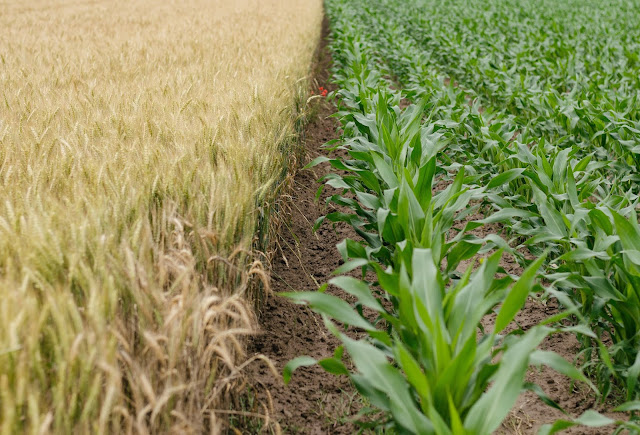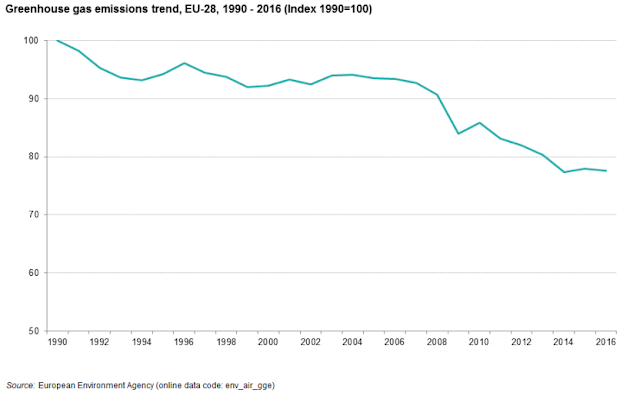Was T.R. Malthus correct in his concerns about population growth?
Matthew Hodder - Writer
Thomas Robert Malthus was “the first professional economist” (Barber, 1967, p.57) who became known for his ‘Theory of Population’. In his work he tried to explain how the growing human population would outstrip the level of food production and consequently would result in mass misery and strife. Whilst he may have been proven incorrect by his failure to account for the rate of technological progress, this article will explore a way in which Malthus may have been right to worry: that of the impact of population growth on climate change. We will first examine the content of Malthus’s argument, and his Law of Population, followed by an overview of the changes to climate. We will then argue that because of the strain placed on Earth’s resources, and human practices, Malthusian worries may be applied to the modern context of environmental changes.
To begin the article, it would be helpful to establish some brief, but significant, elements of Malthus’s argument. Firstly, he identified that there were two guaranteed facts: that humans require food to survive, and also that reproduction is inevitable, unfortunately giving rise to an unending struggle between the two (Barber, 1967, p.59). The foundations of this struggle were simply the fact that he believed the human capacity to reproduce would far outstrip the human capacity to produce food, resulting that “any improvement in average levels of income… would soon be neutralized by expanding numbers; wages would then be pushed back to subsistence” (Barber, 1967, p.60). This shows Malthus’s dismal outlook on the future, where starvation is rife and real wages are limited by the expanding population where he predicted misery and poverty as a result of expanding population. One way in which we may analyse this issue is that as real wages rise (for Malthus), men and women begin to have children at an increased rate and hence food demand is stretched far beyond the capacity of production (Barber, 1967, p.60). He was concerned that ‘immoral’ actions, such as sex before marriage and early marriages, were resulting in a greatly expanded population. For all of Malthus’s worries about food production, he failed to account for the rate of technological progress in the agricultural industry. Modern harvesting techniques, and practises such as Genetically Modified (GM) crops, have greatly increased the yield of food that we are able to produce, even on the most infertile of lands, and consequently it is difficult to take seriously the claim that food production will be unable to support the population levels at this time. Using a contemporary evaluation of Malthus’ theory, it is certainly likely that the problem of an expanding population relies not only on the human capacity to reproduce, but also a decline in the mortality rate (Barber, 1967, p.62) due to improvements in medical care and hygiene practises. One way in which Malthus can be said to be correct, however, is in his acknowledgement that an expanding population may have serious effects on us all, though it is not likely to impact food production. I want to use some of Malthus’ theory to show that the effects of population growth on changes to our climate are subject to concern.
Over recent years, the world has been subject to an alarming rate and intensity of natural disasters as the climate changes. Huppert and Sparks (2006) postulate that this is a result of “population growth and globalization” (p.1875). They use the example of Hurricane Katrina in 2005, which caused worldwide troubles for economies in the form of oil price shocks and huge destruction to even a wealthy economy (Huppert and Sparks, 2006, p.1876). There are significant consequences for short-term oil price shocks, such as spikes in inflation rates resulting in uncertainty surging into the economy. These short-term shocks are not nearly as bad as what was to happen in 2008, but that is beside the point. The authors of this report also highlight that “warmer atmosphere and ocean[s]” (Huppert and Sparks, 2006, p.1878) could explain the frequency of cyclones of a devastating magnitude. We can almost certainly attribute these changes to human activity. Industrial processes that cause significant emissions, from “the increased use of fossil fuels burned to power new machines, generate electricity and propel transport vehicles” (Statistics Explained, 2018), and so the consequence of industrialised processes are greater emissions of CO2 which impact on the frequency of natural disasters and climate change. This is not entirely the fault of population growth, yet I propose a certain link between the amount of environmentally detrimental activities and the number of humans who demand such activities. All of these changes may well add up to the misery and vice that Malthus predicted as a result of the growing population and industrial processes in a globalised world. With this said, data also shows the trend of emissions since 1990 seems to be going down, as shown in the graph below.
Even with this encouraging trend line for the EU 28, the fact that such drastic action with emission targets may suggest that this comes as too little, too late for the planet in the impact on climate change. With an increasing population, can we say that this will only get worse? Perhaps. The scarcity of resources such as water may provide insurmountable challenges for the human race, as population growth places incessant demand on useable water supplies (Vörösmarty et al., 2000, p.285) , not least leading to drought and misery. This drastically poor outlook may well be the case with the current damage being done to the planet at the moment, suggesting that Malthus may have been correct to worry about the effects of population. We have demonstrated basic, yet undeniable, challenges to the planet that will need serious work as the population and demand for resources continues to rise.
To conclude, I have provided a brief overview of the key components of Malthus’ argument. Whilst it may have lost its relevance to food production thanks to technological progress, there is an argument to suggest that growing population is having damaging effects on the planet, especially given the globalised and industrial world in which we live. Ideally, we will once again see change to our habits or technological change that may alter the outlook of the future for the human race, as we did with food production; though this remains to be seen.
Bibliography:
Barber, W, J. 1967. A History of Economic Thought. Penguin Books: Middlesex.
Huppert, H.E., and Sparks, R.S.J. 2006. Extreme natural hazards: population growth, globalization and environmental change. Philosophical Transactions of the Royal Society. 364, pp.1875-1888
Statistics Explained. 2018. Greenhouse gas emission statistics – emission inventories. [Online]. Available at: https://ec.europa.eu/eurostat/statistics-explained/pdfscache/1180.pdf
Völösmarty, C.J., Green, P., Salisbury, J., Lammers, R.B. 2000. Global Water Resources: Vulnerability from Climate Change and Population Growth. Science. 289 (5477), pp.284-288
Photo Credit - Henry Be - https://unsplash.com/photos/JR8XZ-gdZrA
Thomas Robert Malthus was “the first professional economist” (Barber, 1967, p.57) who became known for his ‘Theory of Population’. In his work he tried to explain how the growing human population would outstrip the level of food production and consequently would result in mass misery and strife. Whilst he may have been proven incorrect by his failure to account for the rate of technological progress, this article will explore a way in which Malthus may have been right to worry: that of the impact of population growth on climate change. We will first examine the content of Malthus’s argument, and his Law of Population, followed by an overview of the changes to climate. We will then argue that because of the strain placed on Earth’s resources, and human practices, Malthusian worries may be applied to the modern context of environmental changes.
To begin the article, it would be helpful to establish some brief, but significant, elements of Malthus’s argument. Firstly, he identified that there were two guaranteed facts: that humans require food to survive, and also that reproduction is inevitable, unfortunately giving rise to an unending struggle between the two (Barber, 1967, p.59). The foundations of this struggle were simply the fact that he believed the human capacity to reproduce would far outstrip the human capacity to produce food, resulting that “any improvement in average levels of income… would soon be neutralized by expanding numbers; wages would then be pushed back to subsistence” (Barber, 1967, p.60). This shows Malthus’s dismal outlook on the future, where starvation is rife and real wages are limited by the expanding population where he predicted misery and poverty as a result of expanding population. One way in which we may analyse this issue is that as real wages rise (for Malthus), men and women begin to have children at an increased rate and hence food demand is stretched far beyond the capacity of production (Barber, 1967, p.60). He was concerned that ‘immoral’ actions, such as sex before marriage and early marriages, were resulting in a greatly expanded population. For all of Malthus’s worries about food production, he failed to account for the rate of technological progress in the agricultural industry. Modern harvesting techniques, and practises such as Genetically Modified (GM) crops, have greatly increased the yield of food that we are able to produce, even on the most infertile of lands, and consequently it is difficult to take seriously the claim that food production will be unable to support the population levels at this time. Using a contemporary evaluation of Malthus’ theory, it is certainly likely that the problem of an expanding population relies not only on the human capacity to reproduce, but also a decline in the mortality rate (Barber, 1967, p.62) due to improvements in medical care and hygiene practises. One way in which Malthus can be said to be correct, however, is in his acknowledgement that an expanding population may have serious effects on us all, though it is not likely to impact food production. I want to use some of Malthus’ theory to show that the effects of population growth on changes to our climate are subject to concern.
Over recent years, the world has been subject to an alarming rate and intensity of natural disasters as the climate changes. Huppert and Sparks (2006) postulate that this is a result of “population growth and globalization” (p.1875). They use the example of Hurricane Katrina in 2005, which caused worldwide troubles for economies in the form of oil price shocks and huge destruction to even a wealthy economy (Huppert and Sparks, 2006, p.1876). There are significant consequences for short-term oil price shocks, such as spikes in inflation rates resulting in uncertainty surging into the economy. These short-term shocks are not nearly as bad as what was to happen in 2008, but that is beside the point. The authors of this report also highlight that “warmer atmosphere and ocean[s]” (Huppert and Sparks, 2006, p.1878) could explain the frequency of cyclones of a devastating magnitude. We can almost certainly attribute these changes to human activity. Industrial processes that cause significant emissions, from “the increased use of fossil fuels burned to power new machines, generate electricity and propel transport vehicles” (Statistics Explained, 2018), and so the consequence of industrialised processes are greater emissions of CO2 which impact on the frequency of natural disasters and climate change. This is not entirely the fault of population growth, yet I propose a certain link between the amount of environmentally detrimental activities and the number of humans who demand such activities. All of these changes may well add up to the misery and vice that Malthus predicted as a result of the growing population and industrial processes in a globalised world. With this said, data also shows the trend of emissions since 1990 seems to be going down, as shown in the graph below.
Source: Statistics Explained, 2018, https://ec.europa.eu/eurostat/statistics-explained/pdfscache/1180.pdf
To conclude, I have provided a brief overview of the key components of Malthus’ argument. Whilst it may have lost its relevance to food production thanks to technological progress, there is an argument to suggest that growing population is having damaging effects on the planet, especially given the globalised and industrial world in which we live. Ideally, we will once again see change to our habits or technological change that may alter the outlook of the future for the human race, as we did with food production; though this remains to be seen.
Bibliography:
Barber, W, J. 1967. A History of Economic Thought. Penguin Books: Middlesex.
Huppert, H.E., and Sparks, R.S.J. 2006. Extreme natural hazards: population growth, globalization and environmental change. Philosophical Transactions of the Royal Society. 364, pp.1875-1888
Statistics Explained. 2018. Greenhouse gas emission statistics – emission inventories. [Online]. Available at: https://ec.europa.eu/eurostat/statistics-explained/pdfscache/1180.pdf
Völösmarty, C.J., Green, P., Salisbury, J., Lammers, R.B. 2000. Global Water Resources: Vulnerability from Climate Change and Population Growth. Science. 289 (5477), pp.284-288
Photo Credit - Henry Be - https://unsplash.com/photos/JR8XZ-gdZrA





Comments
Post a Comment